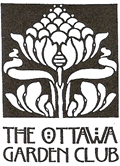Daffodowndilly
She wore her yellow sun-bonnet,/She wore her greenest gown;/She turned to the south wind/And curtsied up and down./She turned to the sunlight/And shook her yellow head,/And whispered to her neighbor: “Winter is dead.” –A.A. Milne, When We Were Young
Daffydowndillies, Jonquils, Narcissus, Daffodils....which do I use?
Are you as confused as I am? Between the botanical names and the common names of this group of bulbs, it is hard to figure out what refers to what! Daffodils are a complicated bunch..I've read that there are 13, 000 unique types of daffodils, and counting, as hybridizers produce more and more of these simple, but stunning blooms. So, let's straighten this out...or try, at least, as there are differing opinions still as to which name refers to which type of daffodil...
Daffodils belong to: Family: Amaryllidaceae; Genus: Narcissus; species: (a few dozen wild species);Cultivar (cultivated by humans)
The Royal Horticultural Society has grouped them into 13 divisions with each division having a certain number of flowers, a description of what the perianth, or petals, look like, as well as the colour, length and texture of the trumpet, (known in botanical circles as the corona. Sorry....!). Click here to access the American Daffodil Society www.daffodilusa.org All of the RHS divisions are listed there.
A few examples:
Division one...One flower to a stem; corona (“trumpet”) as long as, or longer than the perianth segments (“petals”).
Division 4 – Double Daffodils One or more flowers to a stem, with doubling of the perianth segments or the corona or both.
Division 5 – Triandrus Daffodils Characteristics of N. triandrus clearly evident: usually two or more pendent flowers to a stem; perianth segments reflexed.
All of the big societies - The American Daffodil Society, daffodilusa.org; The Daffodil Society, UK, thedaffodilsociety.com; The RHS, rhs.org.uk, etc.- use Narcissus (botanical name for daffodils)and Daffodil (common name for all of the members of the Genus Narcissus) interchangeably, but discourage the use of Narcissus except in scientific papers. Jonquils are fragrant, often yellow, and make up Division 7. These daffodils are considered old fashioned and much loved in the southern US. And Daffydowndillies? Well, that was what we called them when I was a child in England. I rediscovered recently the little rhyme we used to sing and share it with you above. Maybe some of you know this as well?
So, Daffodil it is! Just a few things about daffodils...
Planting and Care
They like to have a bit of light shade. Under a large deciduous tree is ideal, and one without shallow roots is even better, so not evergreens. They bloom and then ripen their leaves before it gets too shady under the tree. It it’s very important to let daffodil leaves yellow before removing them. The plant sends energy to the bulb from the green leaves so it can bloom the following year. When we were kids, we would braid the leaves so they looked tidy, but it wasn’t great for the bulbs. So do a couple of them like this to see what they look like and let the others ripen naturally. When leaves are yellow, or pull away with no resistance, you can remove them.
Daffodils are tough!!! They can take quite a bit of snow and cold!!
Photo credit: Elisabeth Arbuckle
Toxic
Daffodils are toxic. Won't kill you, probably, but .....and when you mix them with tulips or other spring bulbs, they can turn the water in a vase a bit off, which the other flowers don't like. Other blooms, then, will go over quite quickly.
Naturalizing
A lovely thing to do...you take handfuls of daffodil bulbs, throw them onto the grass, and plant where they lie. Under the high canopy of a deciduous tree is good. If two land together, plant them like that. But you must be happy to allow the grass to grow taller than normal for a while so that the daffodil leaves ripen well before cutting the grass. I think that is why we don't naturalize bulbs as much here as they do in Europe (with the exception of the Rockeries and a few plantings here or there). We love our lawns to be neat and tidy!
There used to be an amazing planting at the Beechwood cemetery running up the hill at the entrance, but they apparently took it out as it was too messy for a few weeks as the leaves died back. Worth the mess for a bit for all of that beauty.....to my mind, anyway.
So, give naturalizing a try....it will conjure up memories of this poem we all learned so long ago... and don't plant 20 of them. Plant 100!
My friend lives next door to the Warkworth Castle, in the North of England. What a sight to have those Daffodils naturalized on the hill leading up to the castle! (photo credit: Colette Conway)
Naturalized Daffodils on Rockcliffe Parkway. Photo credit: Guy Pratte
I Wander’d Lonely as a cloud/That floats on high o’er vales and hills,/When all at once I saw a crowd,/A host, of golden daffodils;/Beside the lake, beneath the trees,/Fluttering and dancing in the breeze. –William Wordsworth, I Wander’d Lonely as a Cloud








